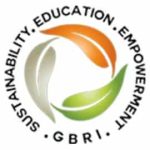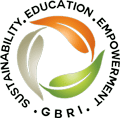The WELL Community concept is designed to champion the integration of design, policy, and operational strategies that emphasize the reduction of health disparities and the advocacy of social diversity and inclusion. This approach ensures that built environments are designed to empower all residents and users, facilitating their full access, active participation, and overall well-being within their communities. Central to this are the 14 features of the Community concept within the WELL Building Standard v2.
Participate in this course to delve deeply into these 14 features. You’ll gain an in-depth understanding of their application and significance, and you’ll be guided through their implementation within the context of a real-world project. By prioritizing inclusivity, engagement, and access to crucial healthcare, the WELL Community concept plays a pivotal role in sculpting both individual and communal health outcomes.
This course is a component of the GBRI’s WELLopedia Series, which comprehensively explores the intricacies of the WELL Building Standard v2. While it provides a comprehensive standalone learning experience, it can also be paired with other courses in the series based on your individual interests or credential maintenance requirements.
Learning Objectives:
By the end of the Mind concept module, participants will be able to:
- Grasp the core tenets of health literacy, diversity, and inclusion within the framework of the WELL Building Standard.
- Investigate the socio-cultural factors that influence health literacy and identify ways to boost it among various demographic groups.
- Acknowledge the critical role of emergency preparedness in contemporary challenges, such as COVID, and how built environments can aid in risk reduction.
- Deepen their understanding of universal design and accessibility, recognizing their pivotal role in cultivating environments that are both inclusive and secure.
- Recognize the profound influence of civic involvement, philanthropic efforts, and community engagement in nurturing a comprehensive culture of well-being.
- Develop the skills to synchronize organizational goals with health-centric visions, ensuring that wellness principles are seamlessly integrated into every aspect of built spaces.
Keyterms:
WELL Building Standards, Community Concept, Health and Wellness Promotion, Integrative Design, Emergency Preparedness, Indoor Air Quality, Occupant Survey, Health Services and Benefits, Diversity and Inclusion, Accessibility and Universal Design, Emergency Resources, Civic Engagement, Family Support, New Parent Support, Health Literacy, Stakeholder Engagement, Natural Disasters, Built Environment, Health-oriented Project Mission, Socio-cultural Factors.
Promoting community well-being is rooted in understanding and addressing the primary factors that shape both individual and collective health. These factors, known as the social determinants of health, encompass a variety of conditions ranging from global to local levels. They include physical determinants such as built environments that directly affect health. Notably, these determinants can lead to health disparities such as variations in health status among different population groups. Such disparities often arise due to unequal distribution of resources and power based on attributes like gender, race, ethnicity, and socio-economic status. For instance, disparities manifest when individuals, depending on their racial or socio-economic background, grapple with low health literacy or face barriers to accessing basic health services.
The WELL Building Standard is a pioneering framework that places health and wellness at the forefront of building and community design. Within this standard, the Community Concept plays a pivotal role. It seeks to ensure access to essential healthcare, cultivate a health-positive culture catering to diverse needs, and foster inclusivity within communities. By championing the adoption of health-focused design, policy, and operational strategies, the WELL Community Concept takes significant strides in bridging health disparities and championing diversity and inclusion. True equity and health in communities arise when every individual can seamlessly access, engage, and flourish within a built environment.
This concept encompasses 14 distinct features, with four being foundational preconditions and the remainder serving as optimizations. While the guide includes additional beta features that expand upon this framework, they are not essential for examination purposes. However, acquainting oneself with these features offers insights into the evolving trajectory of the WELL Building Standard. It's worth noting that there exists a synergy among these features, as seen with aspects like health and wellness or occupant surveys. The art lies in designing and implementing policies that holistically address multiple facets of community well-being.
| Preconditions (4) |
|
|
|
|
|
|
|
| Optimization (10) |
|
|
|
|
|
|
|
|
|
|
|
|
|
|
|
|
|
|
- Health and Wellness Promotion: Factors including age, socioeconomic status, mental health, and cultural background contribute to health literacy. A lack of this literacy is linked to reduced preventative healthcare use and lower self-reported health. This precondition aims to promote understanding of the project's WELL features and the connection between health and built environments. To meet this requirement, projects must provide a guide outlining the WELL features, the relationship between health and buildings, and available health resources.
- Integrative Design: Stakeholder engagement from a project's inception is vital. Without it, the health and well-being of certain populations can be negatively impacted, especially among low-income and minority groups. This precondition seeks to enable a collaborative project approach that centers on collective wellness and sustainability goals. Projects must facilitate inclusive planning processes and establish a health-focused project mission.
- Emergency Preparedness: In the wake of challenges like COVID and the impact of natural disasters, the importance of emergency planning is clear. This precondition emphasizes the need for risk assessments, emergency management plans, and occupant education to ensure readiness for various emergencies.
- Occupant Survey: Understanding occupant experiences is crucial. Given the varied nature of built environments, capturing feedback is key. Projects are required to gather feedback on health, well-being, and satisfaction, helping to measure the impact of WELL strategies.
- Enhanced Occupant Survey: This optimization builds on the basic survey requirements. It mandates more in-depth feedback collection, both before and during occupancy, ensuring a comprehensive evaluation of occupant experiences.
- Health Services and Benefits: Paid sick leave and access to healthcare are vital. Despite global norms, many workers still lack proper health benefits. Projects are required to provide essential health services, paid sick leave, and flu immunizations, promoting overall health and well-being.
- Enhanced Health and Wellness Promotion: An extension of the first precondition, this feature emphasizes cultivating a health-focused culture through communication, promotion programs, and executive leadership.
- New Parent Support: Supporting new parents is crucial for the well-being of both parents and children. Projects must offer paid parental leave and resources for returning parents.
- New Mother Support: Postpartum care is essential. Workplace accommodations can influence breastfeeding duration. This feature mandates dedicated lactation rooms, break times, and resources to aid breastfeeding.
- Family Support: As the caregiver demographic grows, supporting working parents becomes imperative. Projects must implement policies and programs that support childcare and family leave.
- Civic Engagement: Engaging with the community is key, especially for the younger workforce. Projects should commit to civic engagement through charitable activities, public spaces, and community programs.
- Diversity and Inclusion: Companies with a diverse workforce often see better financial returns. Despite this, diversity often isn't a top priority. Projects must promote and report on diversity and inclusion initiatives.
- Accessibility and Universal Design: Many environments overlook the needs of people with disabilities. Projects are encouraged to exceed accessibility standards by integrating universal design principles.
- Emergency Resources: From sudden cardiac arrests to drug overdoses, emergencies are unpredictable. Projects must provide resources and training to ensure swift and effective responses to diverse emergency situations.








